Streaming video services continue to grow their subscriber bases, and there are no signs that the industry is slowing down. Netflix has almost 50 million subscribers in the US alone, Hulu recently surpassed 12 million domestically, and more than 66 million Americans pay for Amazon Prime (though not everyone takes advantage of Prime Video). The numbers are staggering, and that’s not even getting into free services like YouTube, or streaming cable options like Sling TV and DirecTV Now.
You might associate streaming media with laptops or smart TVs, but people watching videos collectively accounted for 60% of all mobile data traffic in 2016. So it’s an important factor with smartphones — and with good reason. Your phone stays with you no matter where you are, so why not pass the time by watching an episode of Orange Is the New Black, Stranger Things, or Marvel’s Daredevil?
But when it comes to watching movies and TV, all phones are not created equal. Depending on factors like speaker quality, battery life, and screen size, a phone can either make your experience enjoyable, or completely ruin the fun. So if you’re a streaming video lover, we tested the top devices on the market using a number of criteria, in the hopes of helping you make an informed decision on your next smartphone purchase.
Key Comparison Points
When it comes to watching streaming videos on your smartphone, there are several important factors to consider:
Read more: 7 Ways to Bypass Android’s Secured Lock Screen
Selection & Rating
To pare this list down to the top four phones for watching videos, we laid down a set of ground rules. First, since we’re an American site, all phones in this list had to be available for purchase in the United States at the time of this writing. Beyond that, the screen size had to be more than five inches to provide the best viewing experience, so that ruled out smaller handsets like the iPhone 7 and iPhone SE.
In addition to that, we made dual-firing speakers a requirement to ensure that you’d enjoy immersive sound while streaming. This rule excluded quite a few top-tier phones, including the Google Pixel, Pixel XL, Galaxy S7, S7 Edge, iPhone 6S Plus, OnePlus 3T, LG G5, and LG V20.
Beyond that, another requirement was a battery with a 3,000 mAh capacity or greater, which ensures that you’ll be able to stream video without being tethered to a charger. It’s worth noting here that the iPhone 7 Plus falls just shy of this mark at 2,900 mAh, but we gave it a pass since iOS has a much different method of battery management compared to Android. While Android phones might have higher battery capacities, iOS phones use their battery with much greater efficiency.
Two final requirements were good storage capacity and LTE connectivity. In order to make this list, the phone’s base model must have at least 32 GB of built-in storage space for saving video files locally when you need to, and that ruled out devices like the Moto X Play. LTE connectivity is an absolute must for streaming videos on the go, since nobody wants to watch a poor quality video with buffering and lag, so budget phones with only 3G connectivity didn’t make the cut.
With all of that taken into consideration, we were left with the following four phones. From there, we ranked the devices based on how well they scored in each of the categories in the above chart, so we’ll give you the rundown for each in descending order.
1. Nexus 6P
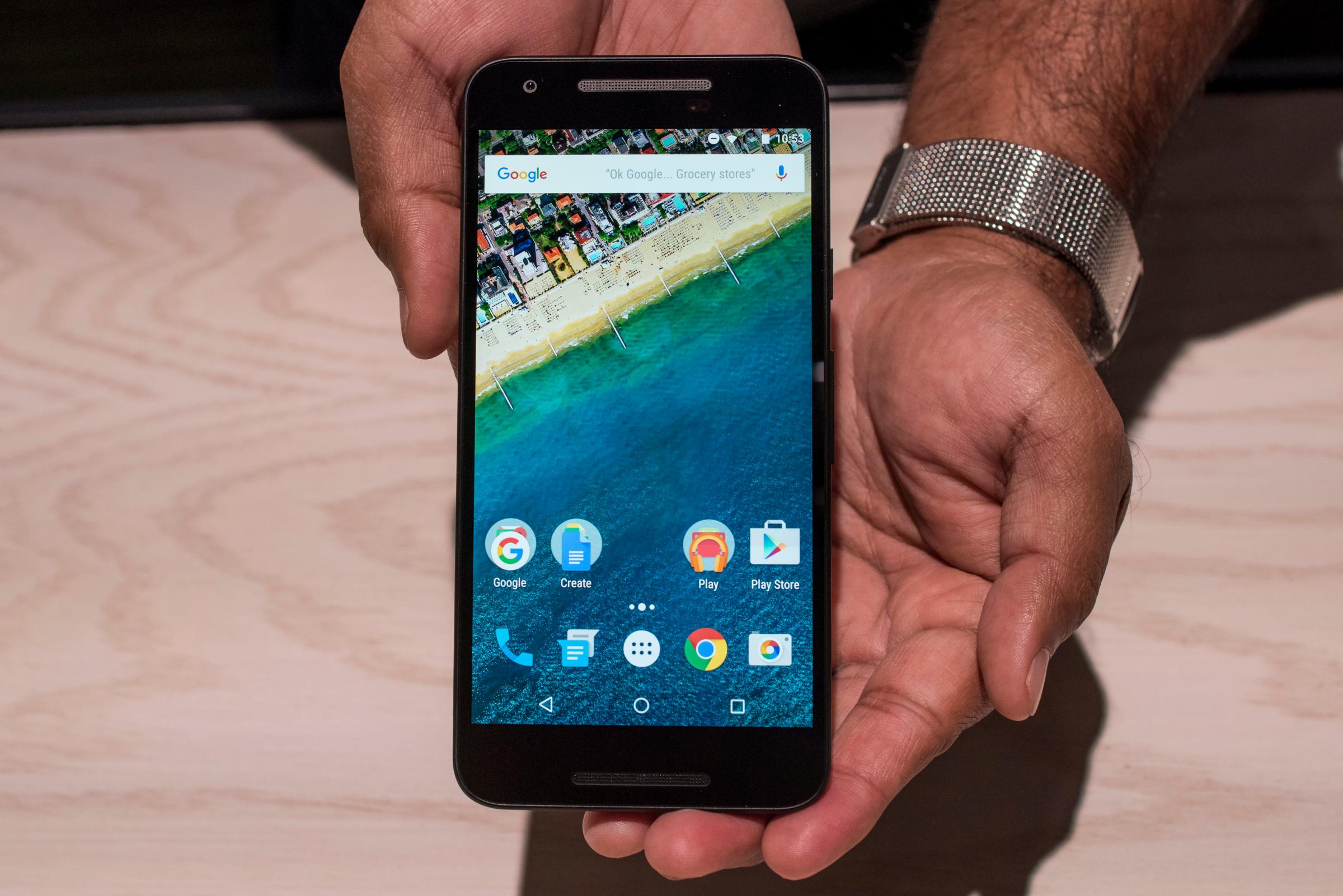
Google’s Nexus 6P was produced by Huawei, and became available for preorder on September 29, 2015. While there aren’t any real sales figures for the Nexus 6P, we do know that a thousand phones were sold on the first day, and it has been a very well-received phone, despite packing the infamous Snapdragon 810 processor.
At 6,406 K, the Nexus 6P’s color temperature was the closest to pure white. Coupled with a contrast ratio that’s literally off the charts, this means the 5.7″ AMOLED screen on the Nexus 6P provides authentic colors and true blackness. The screen is powered by a massive 3,450 mAh battery, which is considered to be fairly large even by this year’s standards. The screen resolution is phenomenal at 1440p Quad HD, and the brightness gets just high enough to still be visible in full sunlight. On the other hand, it also gets dim enough to not cause a headache while you’re laying in bed and streaming an episode from Hulu.

The dual front-facing speakers ensure that your listening experience is never muddled or muffled, because there’s simply no way to accidentally block those speakers (unless you’re this kid). The speakers might not be the loudest amongst the other contending phones, but they do fire at the same output decibels and provide a fairly nice stereo surround effect.
Multitasking is a breeze — you can reply to notifications and split the screen in half to open up another app (to check your email or Google Image Search the saucy actor/actress you just saw), and none of it pauses or breaks the video you were just watching.
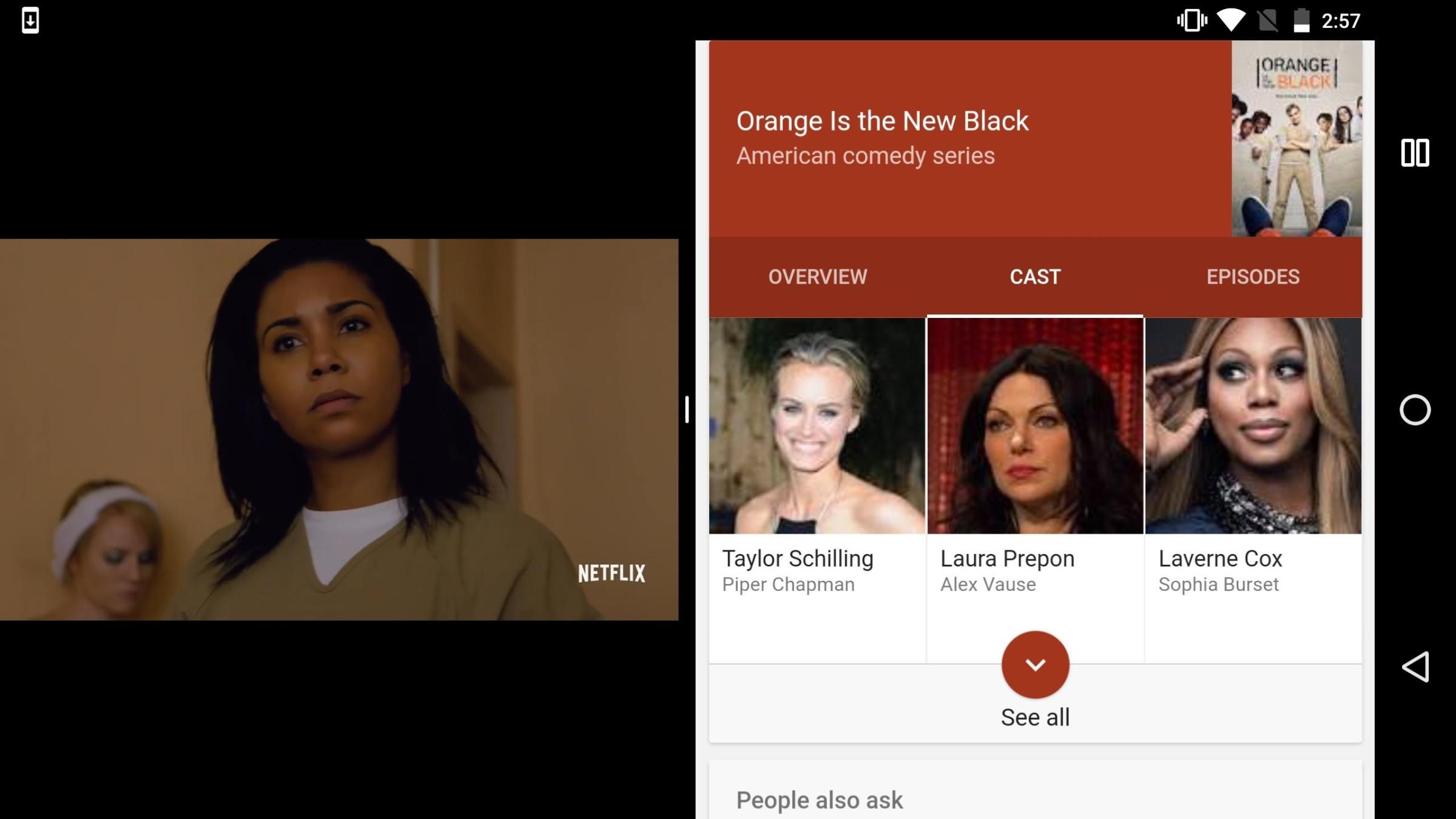
When lowering and raising the volume, the volume slider only shows up at the top of the screen and lasts for about three seconds, so it doesn’t get in the way of what you’re watching. You can also manually dismiss the volume dialog by putting your finger on top and sliding upwards, or simply tapping anywhere on the screen.
One gripe with the Nexus 6P is that it doesn’t have an expandable storage slot, so no SD card (though, there is the option to buy the 128 GB model for a couple hundred extra bucks). Granted, an SD card would be cheaper than buying a larger storage model, but it’s good to know that this option is still available for those die-hard Nexus fans. The buttons on the 6P are another story, they get pressed fairly easily no matter how you’re holding the phone. But they are all on the same side, so you can prop it up against something without having to worry.
With a starting price of $399, there’s just no way this phone will disappoint anyone — certainly not if you’re interested in streaming video.
Read more: Recover a Lost WiFi Password from Any Device
Buy it here
2. ZTE Axon 7
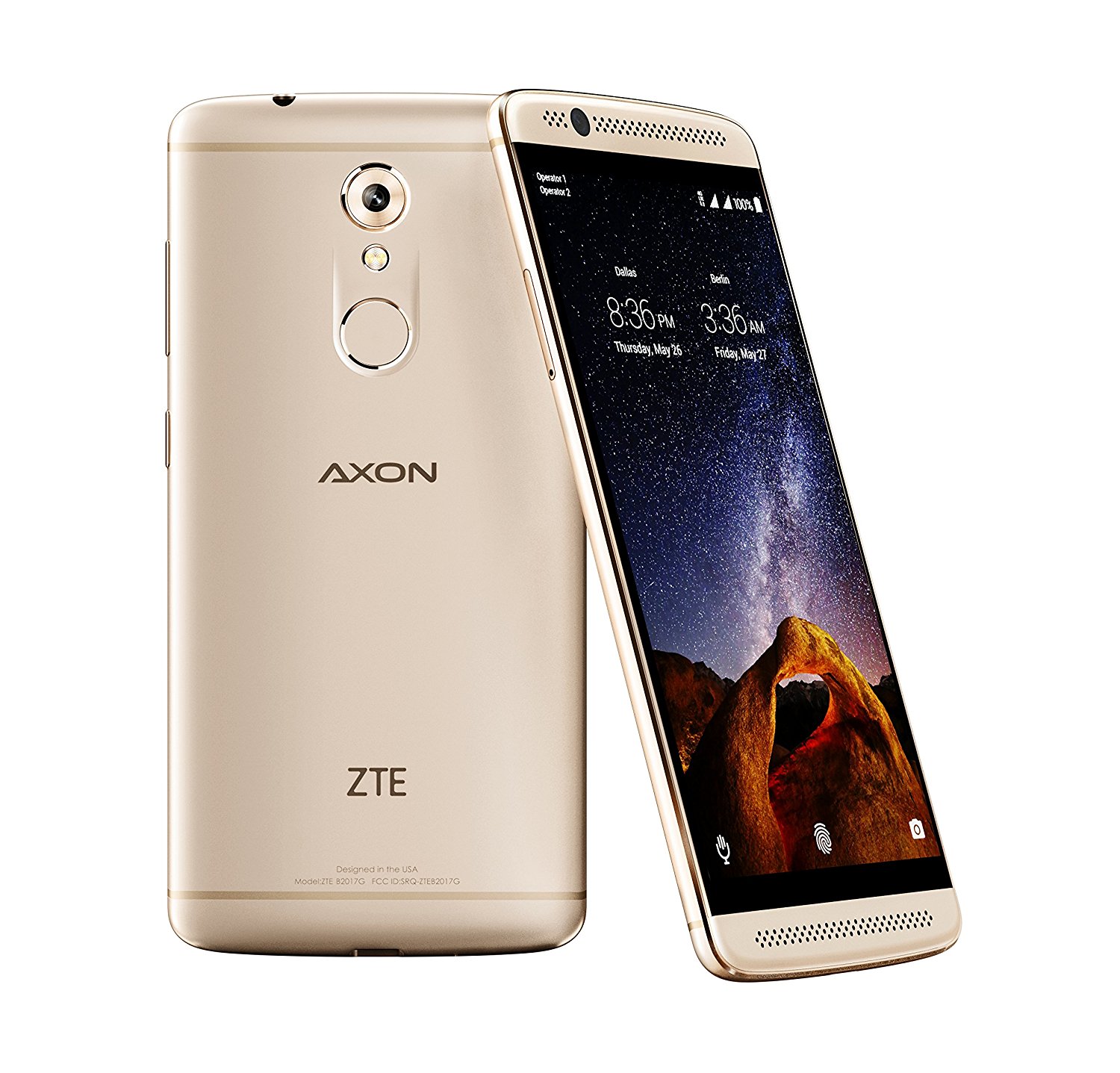
The ZTE Axon 7 is a midrange phone released in 2016, but it comes packed with about as much flagship hardware as the rest of the phones in our list. There haven’t been any figures released on how well the phone has been selling, but the general sentiment amongst consumers seems to be extremely positive, and it even managed to rank amongst our top four phones for audiophiles and music lovers.
The speakers on the ZTE Axon 7 are fairly loud, hitting 74 dB with ease, which means you can hear them clearly in almost all daily activities. They’re also in the preferred speaker position (dual front-facing), so there’s no way to accidentally cover one of them and cause audio muffling. The ZTE Axon 7 even has a 5.5″ AMOLED screen with the same 1440p resolution as the Nexus 6P. The AMOLED screen contributes to a perfect contrast ratio, meaning the blacks are true blacks, because the individual pixels in the display completely turn off when the hex code#00000 is sent to them.
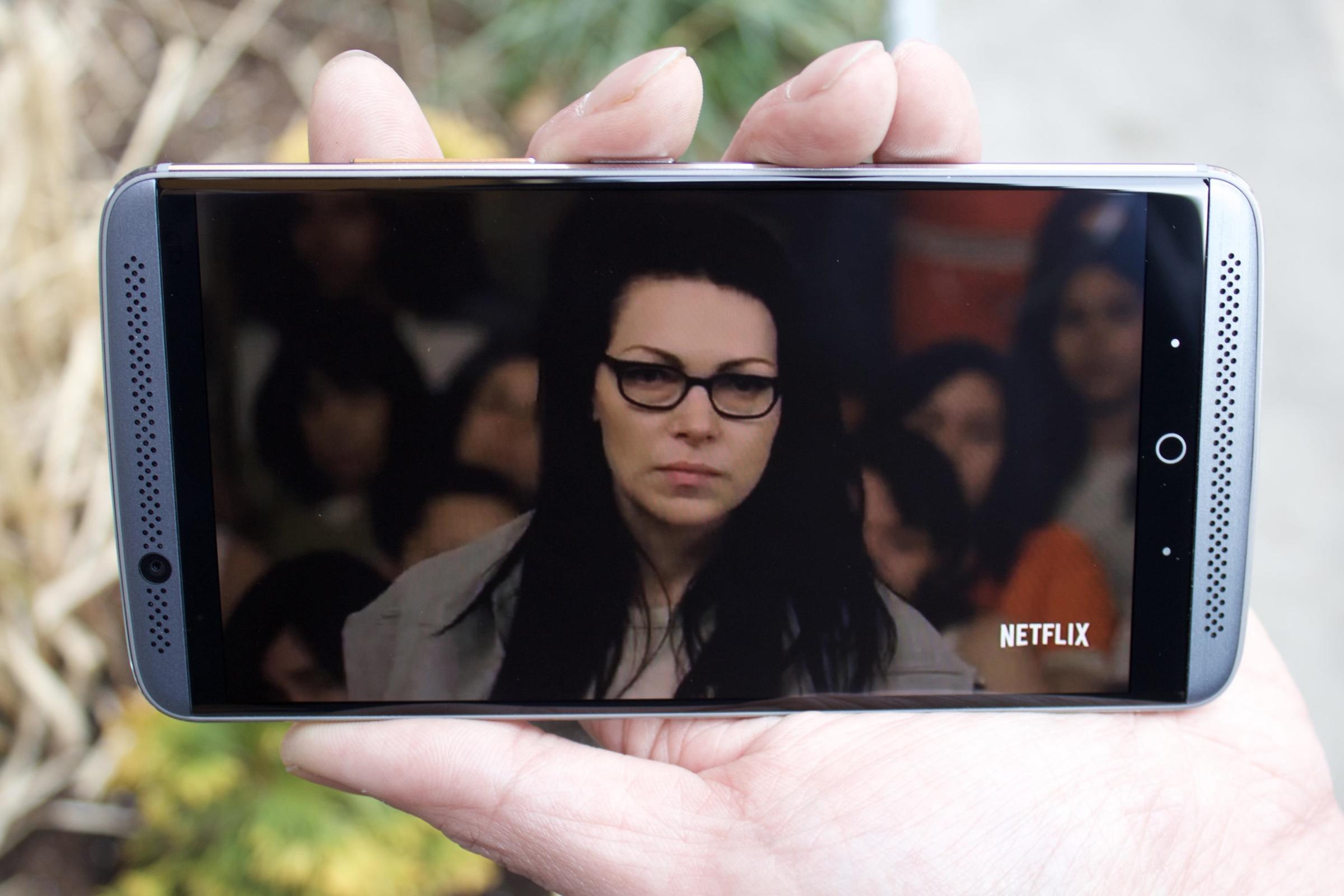
On the other hand, at 7,698 K, the screen temperature is a lot warmer than the ideal rating of 6,500 K, but there are a few options in the display settings that allow you to manually play with and change the temperature of the screen to one that feels a bit more comfortable to you. The other good thing about the ZTE Axon 7 is that it does get a bit dimmer than the Nexus 6P at the lowest brightness setting, while the maximum brightness is exactly the same as the 6P. On top of that, it’s rocking Android Nougat already, which means it comes with several great multitasking features that won’t interrupt your viewing experience.
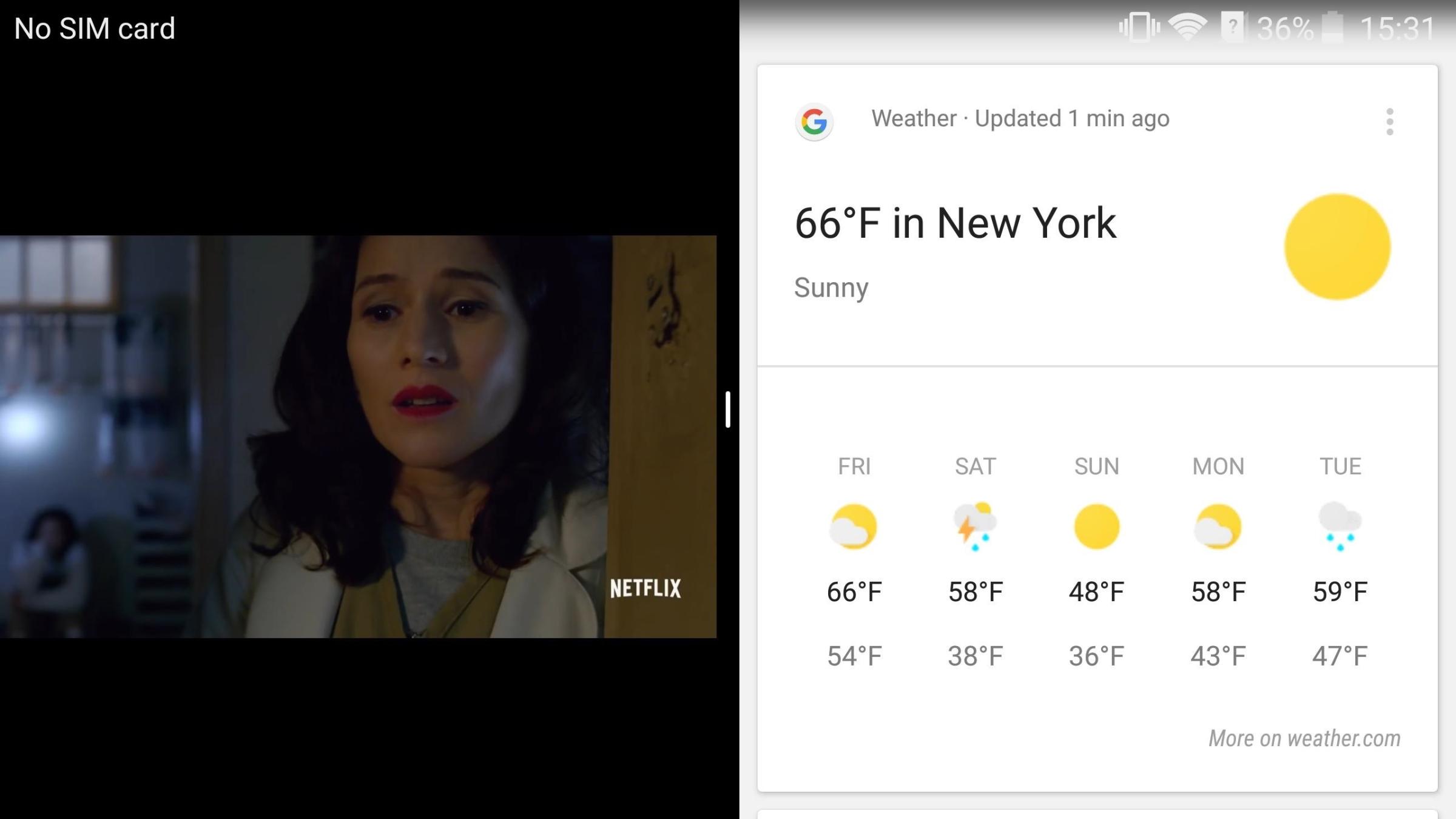
The ZTE Axon 7 is the cheapest phone in our list (exactly one cent less than the Nexus 6P), but has the same or higher specifications as the rest of the phones. It has a base storage of 64 GB and an expandable storage slot, while rocking two SIM card slots at the same time. Multitasking, notifications, and volume control work exactly the same on the ZTE Axon 7 as on the Nexus 6P, so absolutely nothing should disturb video playback.
Buy it here
3. iPhone 7 Plus

The iPhone 7 Plus made its debut on September 16, 2016, and so far, it seems to be outselling its little brother, the regular iPhone 7. This marks the third plus-sized iPhone model, as the line started with the iPhone 6 Plus in 2014, when Apple decided it wanted to capitalize on the media consumption market.
You might consider the phone to have a boring design, but some would call it tried and true, and it’s certainly is full of hardware that makes it stand out compared to previous iPhone models. For starters, the dual stereo speakers are a new addition to Apple’s flagship line, and though one speaker fires downward, they’re able to crank out audio at a nice and loud 72 decibels. It doesn’t have an SD card slot, but Apple finally upped the base storage level on its iPhone models to a respectable 32 GB, while simultaneously increasing the higher-tiered storage options to 128 GB and 256 GB.
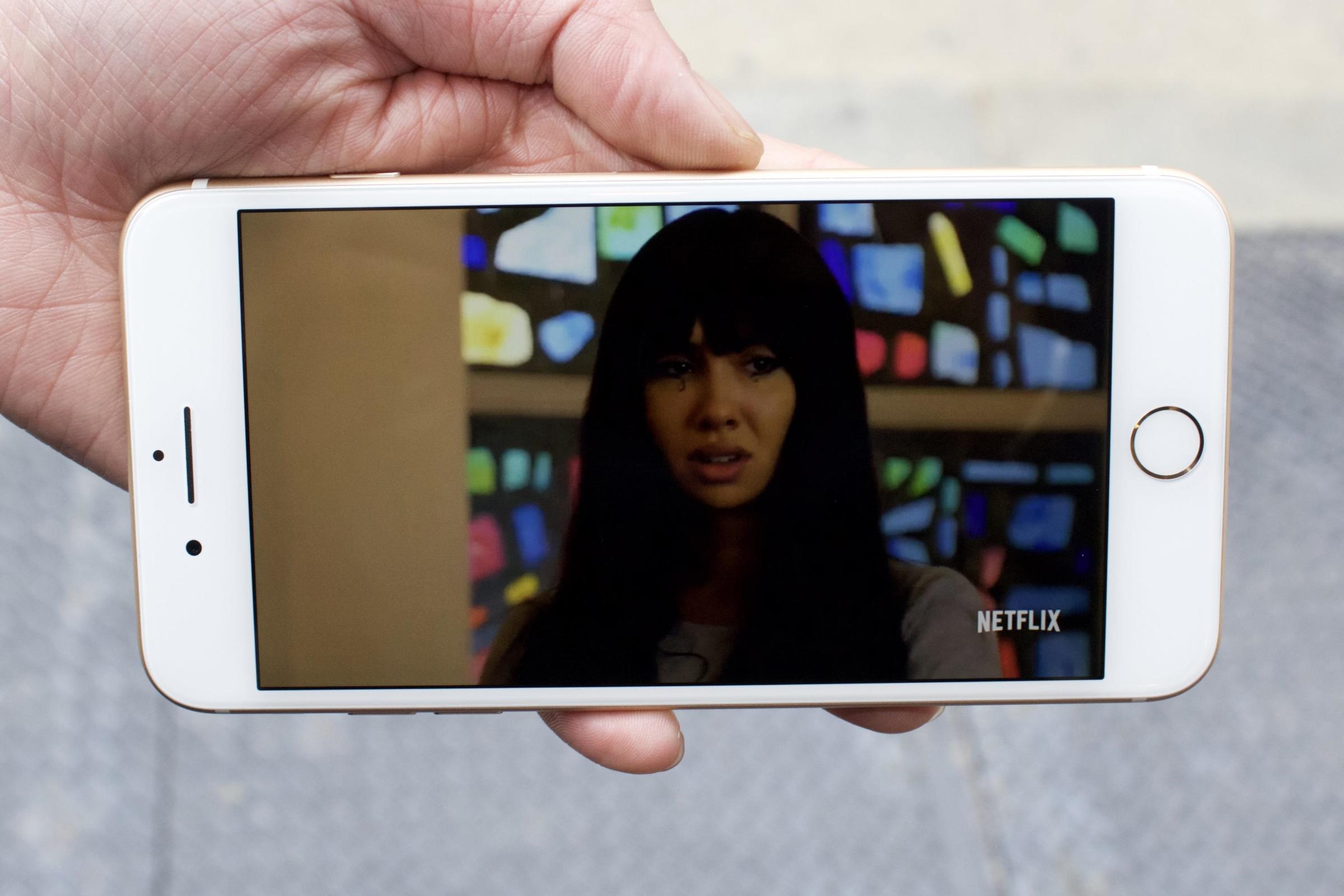
On the down side, multitasking and notifications on the iPhone 7 Plus do interfere when watching videos. In some cases, notifications will cause the video to pause, and even when that doesn’t happen, the ringtone drowns out any audio. Using the volume keys causes an obnoxiously large volume icon to show up right in the middle of your screen in apps such as Netflix and Hulu, completely blocking the view and lingering for about three seconds. Unfortunately, there’s nothing you can do to dismiss the popup, either, though this volume icon does not show up in YouTube or the stock player.
Multitasking on the 7 Plus will sometimes cause the video to restart when you switch back to it, so that’s no fun. For the most part, the stock Apple player is immune to a lot of these annoyances.
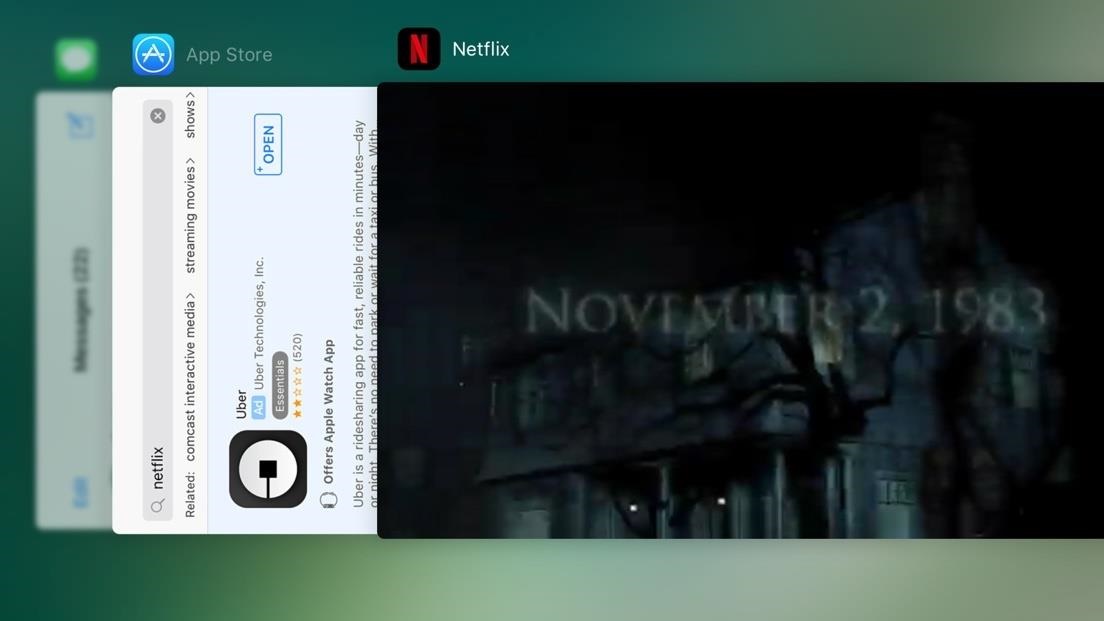
The screen on the iPhone 7 Plus is an LCD, but it’s one that puts all Android phones to shame in terms of brightness. The maximum brightness is an astounding 672 nit, and the lowest brightness is 2 nit — so basically, you can use this phone almost anywhere and still be able to see the screen perfectly. The resolution is just 1080p, but it is high definition, so everything short of 4K content will look good. The color temperature is slightly warmer than the ideal temperature, but the colors still look very real. The blacks aren’t the best, but the whites are nice and bright.
Read more: Put Music on Your iPhone Without Using iTunes
Buy it here
4. HTC 10
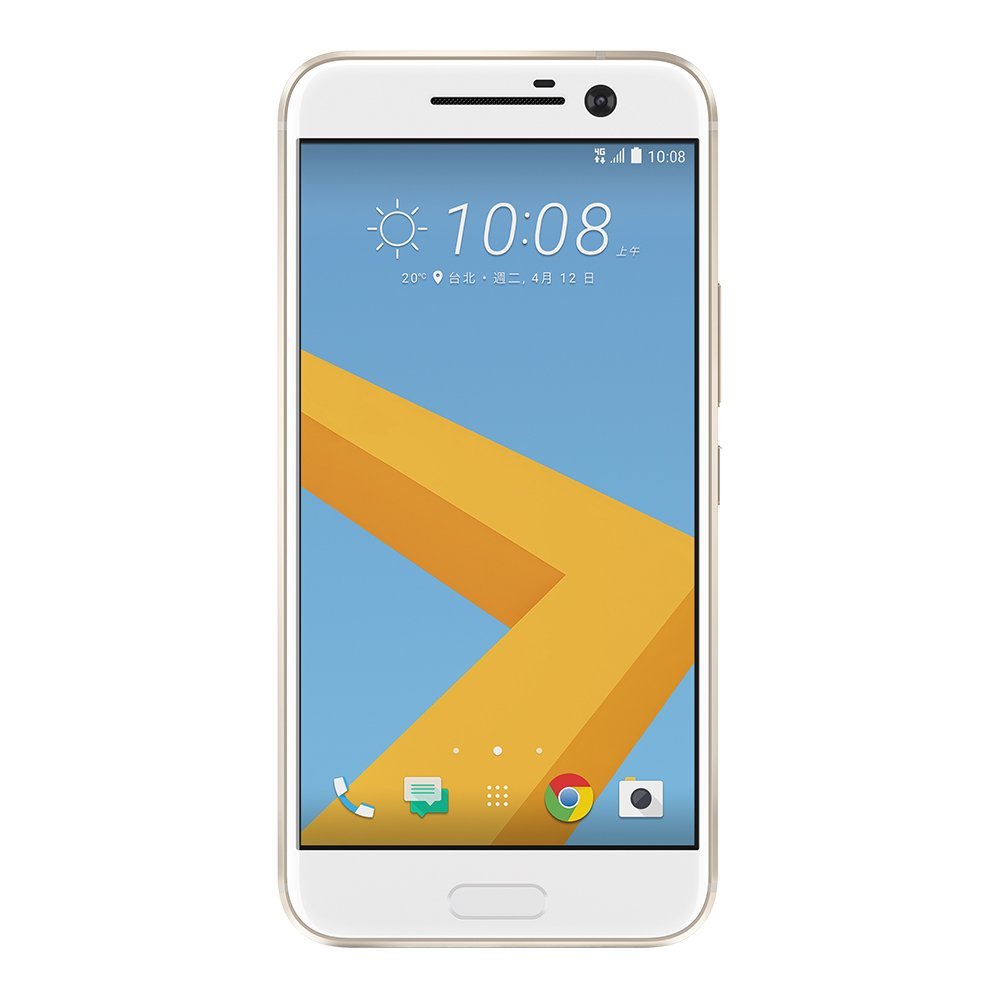
The HTC 10 was released in May 2016, and is HTC’s seventh flagship phone in the One lineup. The first flagship phone One released by HTC was the HTC One X back in 2013, so there has been a consistency in releases since then. HTC hasn’t released sales figures on the HTC 10, but we can see from their earnings report that they had a 42% revenue increase in September 2016, and a 31% year-on-year rise to a 15-month high of $297 million, so things are starting to look up after a weak first half of 2016.
The HTC 10 is my personal favorite phone to watch videos on, simply because of the dual-firing speaker setup. The top front-firing speaker handles all of the treble and higher frequencies, while the bottom-firing speaker outputs all the bass and lower frequencies. The HTC 10 speakers are also the loudest with an average of 77 decibels. While the HTC 10 only has a 3,000 mAh battery to power all of this hardware, it still manages to last long as the other phones when it comes to watching videos. This might be because the screen is a bit smaller, but it’s still as sharp as the other Android phones.

The top speaker is a bit louder than the bottom one, and it’s probably because it fires all of the higher frequencies, which is why we used an average. The HTC 10 comes with a dedicated amp for the speakers, which is why the average is so high. Even though there’s no subwoofer in the HTC 10, the amplifier is powerful enough to keep the bottom speaker neck-to-neck with the top one in terms of decibel output.
The HTC 10 has an LCD screen, which is fairly different compared to the AMOLED screens on the other Android devices in this list. The resolution is the same at 1440p, but because of a strong backlight, it gets much brighter than the Nexus 6P and the ZTE Axon 7. While it does get the brightest amongst the Android phones, it’s also the brightest at the lowest brightness setting. The color temperature on the HTC 10 is a bit warm, but there’s an option in the stock settings to use sRGB instead, which brings the temperature a tiny bit closer to 6,500 K.
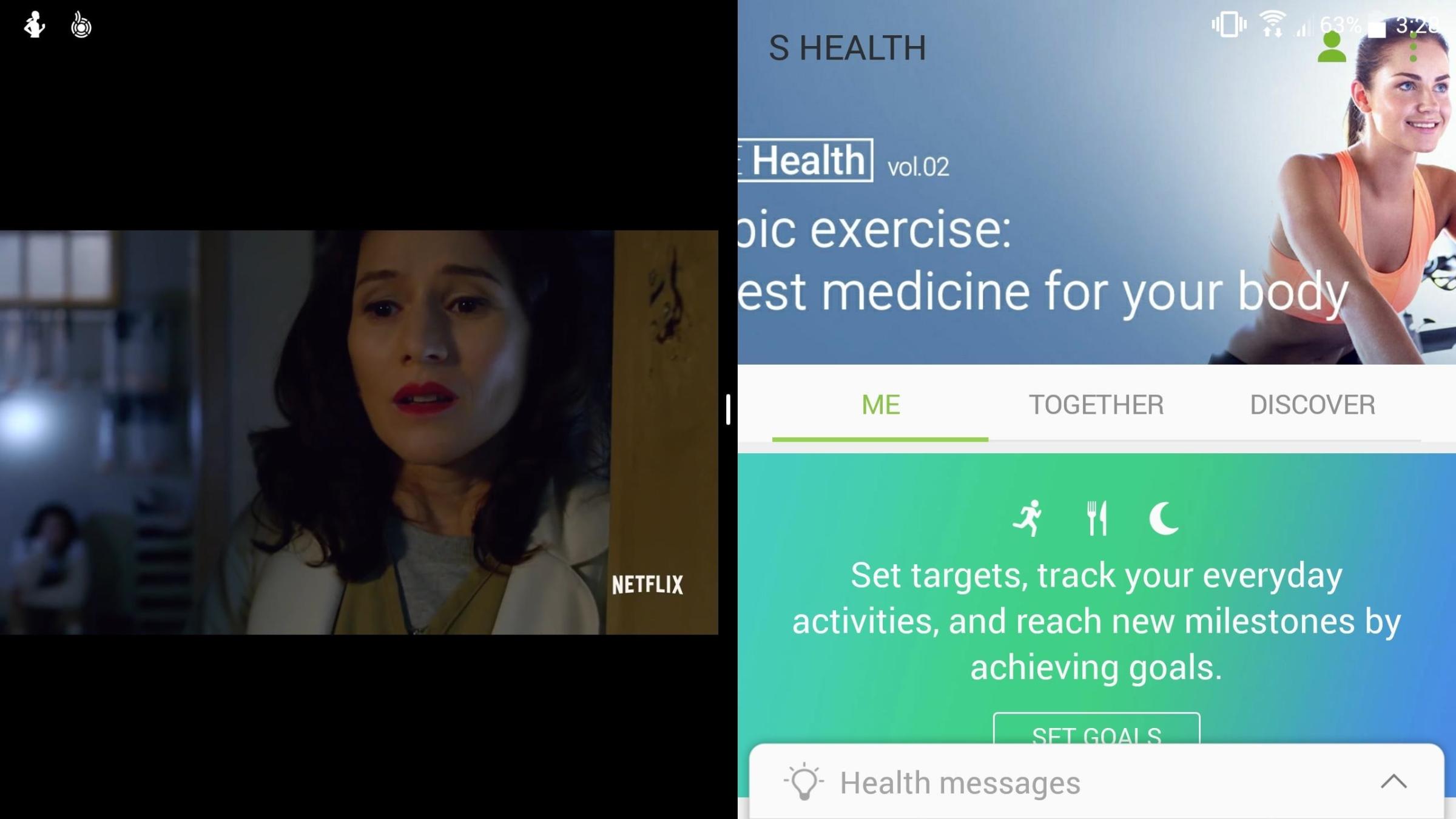
The buttons on the HTC 10 are rock solid, so there’s almost no way to press them by accident, even if you’re holding the phone in landscape mode or propping it up on a table. On top of that, you can even pop in an SD card when you need some extra storage space. One final positive is how the HTC 10 handles multitasking, as responding to texts won’t interrupt your videos, and you can even go into split-screen mode to use two apps simultaneously.
Buy it here
Conclusion
When it comes to the best phone for watching movies and TV shows, the Nexus 6P steals the show. It isn’t too expensive, it has a massive screen, dual front-facing speakers, and a giant battery to power it all. Even though the 6P is a little over a year old, it still blows newer phones out of the water, with the exception of the ZTE Axon 7, which ranked a very close second while featuring many of the same positives. The HTC 10 and the iPhone 7 Plus both held their ground against the other phones and performed beautifully as well, though they were just a shade behind the top two.
What do you guys think, is there a phone we missed? What’s your ideal phone for movie and TV show binge-watching? Is there anything you would like to see an OEM do in the future? Share your thoughts with us in the comments below!
This article originally appeared on GadgetHacks.com
More Must-Reads from TIME
- Cybersecurity Experts Are Sounding the Alarm on DOGE
- Meet the 2025 Women of the Year
- The Harsh Truth About Disability Inclusion
- Why Do More Young Adults Have Cancer?
- Colman Domingo Leads With Radical Love
- How to Get Better at Doing Things Alone
- Michelle Zauner Stares Down the Darkness
Contact us at letters@time.com